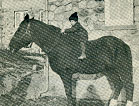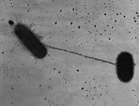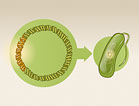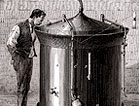From DNA to Beer: Harnessing Nature in Medicine and Industry presents the following classroom resources for K-12 and college/university educators and their students. The resources offer examples of how the rich content and primary sources in the exhibition can be used to promote students’ developing literacy and higher order thinking skills. Educators are welcome to adapt these resources in whole or in part as they deem post appropriate for students’ interests and academic goals.
Select one of the topics from above.
LESSON PLANS
Acquired and Passive Immunity: Diphtheria Antitoxin Serum
Grade level: 7-9 | subject—science & technologyThis lesson plan uses the “Living Factories” section of the From DNA to Beer site, so that students learn about how horses and other animals were used to develop and produce antitoxin serum in order to prevent children with diphtheria from dying of suffocation. Students learn about and define acquired and passive immunity in animals, as they explore the horse’s immune response to the diphtheria toxin injection and the horse’s antitoxin serum that could prevent death in diphtheria patients.
The lesson plan is developed in collaboration with Samantha Candia (Francis Scott Key Middle School, Silver Spring, MD), with contributions by the 2013 Teacher Institute Participants.
HIGHER EDUCATION
Engineering the Genes: Ethical Dilemmas in Modern Biotechnology
is a module developed for undergraduate courses by Nadine Weidman, PhD, lecturer in the Department of History of Science at Harvard University. This higher education module sets developments in biotechnology since the 1970s into historical context and addresses the ethical issues they raise.
ONLINE ACTIVITIES
Explore and discover the science and technology behind treating diphtheria, brewing beer, and producing medicine with animals or recombinant DNA.

Animal record book,
New York City Department of Health, 1897–1898Courtesy National Museum of American History
In the 1890s the New York City Department of Health kept a logbook of the horses used for antitoxin production. The entries for each animal provide a record of toxin injections and bleedings, the amount of blood collected and serum produced, and the animal’s death.
Animal No. 7 received 8 toxin injections and was bled for 30,350 c.c. (8.02 gallon) of blood during Novermber 1897&–December 1898.
Animal No. 83 received 11 toxin injections and produced 50,190 c.c. (13.25 gallon) of blood during October 1897&–May 1899.
Animal No. 96 received 6 toxin injections and was bled to produce 26,430 c.c. (6.98 gallon) of blood during October 1897&–January 1899. Among the collected blood, 265 c.c. was noted for use in toxin injections.
Animal No. 111 received 7 toxin injections and was bled to produce 18,480 c.c. (4.88 gallon) of blood during November 1897&–July 1898. The record contains three entries under “Destroyed” column.
Animal No. 115 received 12 toxin injections and produced 39,100 c.c. (10.33 gallon) of blood during December 1897&–December 1898. Two “distroyed” entries are noted as “moldy” and “broken.”

Études sur la Bière (Studies on Beer)
by Louis Pasteur, 1876Courtesy National Library of Medicine
Pasteur published the results of his study of beer-making as Études sur la Bière in 1876. This illustration from his book demonstrates a method for examining the yeast in beer without exposing the sample to contamination from other microorganisms. His publication included plans for a fermentation tank that would prevent air-borne bacteria from entering and spoiling the brew.

How did they ferment beer?
Created by Link Studio

How did they make diphtheria antitoxin?
Created by Link Studio

How did they make insulin from recombinant DNA?
Created by Link Studio

How did they make penicillin?
Created by Link Studio

Insulin sales kit,
Eli Lilly and Company, 1940sCourtesy National Museum of American History
In the early 1920s, Canadian researchers isolated insulin from the pancreas glands of animals and successfully treated children with diabetes. They partnered with the American company Eli Lilly to mass produce this life-saving substance. This sales kit illustrates the step-by-step process for manufacturing insulin.

Intubation kit,
ca. 1898Courtesy National Museum of American History
Diphtheria is characterized by a membrane that grows in the throat causing the infected child to struggle for breath. To prevent suffocation, doctors performed tracheotomies and intubation, surgical methods for restoring a breathing passage.
This intubation kit includes a set of seven tubes, sized for children up to age twelve, along with the tools used for inserting and extracting the tubes from the throat.
OTHER RESOURCES
Continue to explore topics featured in the exhibition, starting with these lists of suggested readings and online resources, as well as the curator’s bibliography by the exhibition curator Diane Wendt.

